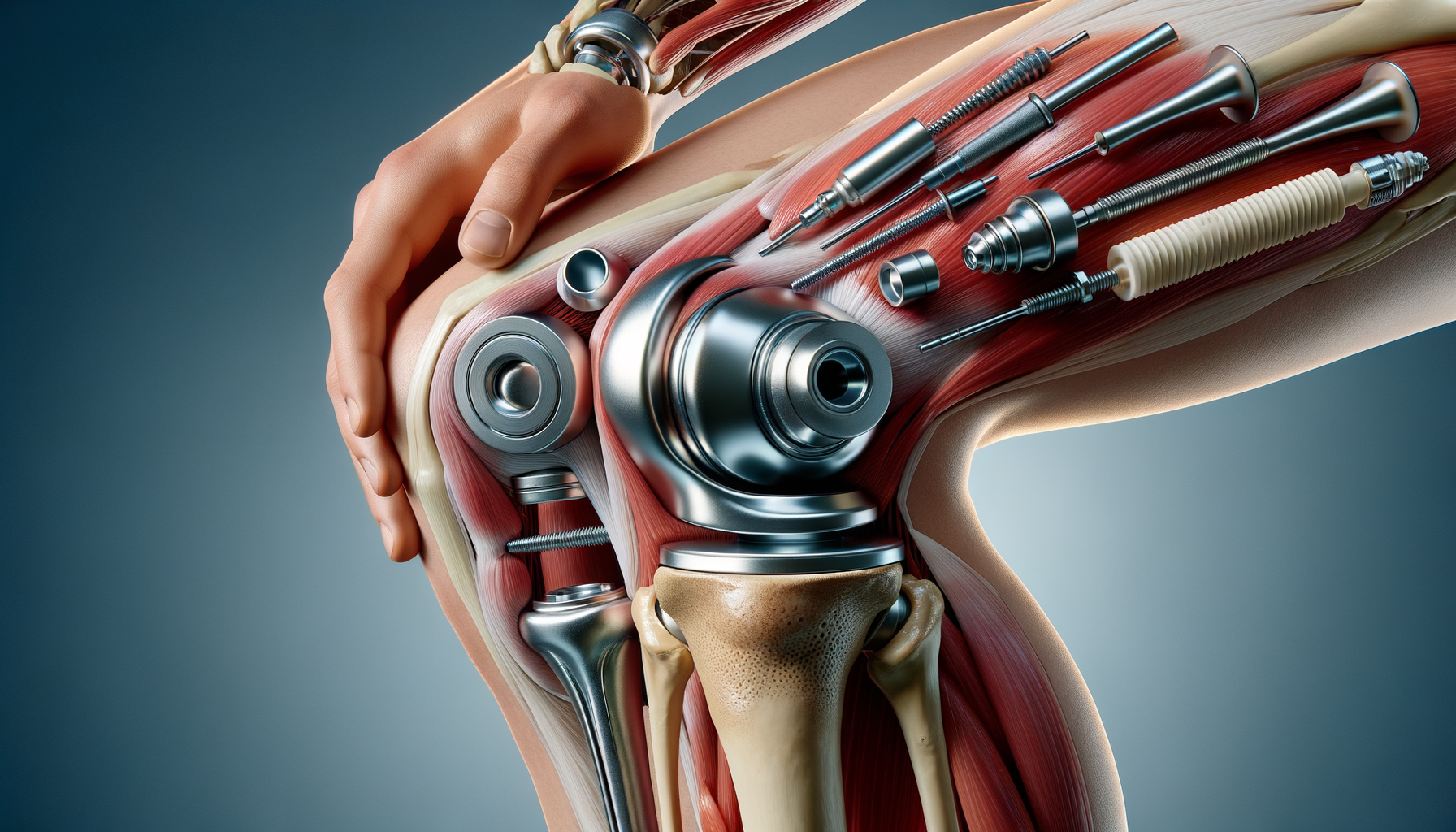Introduction to Knee Replacement
Knee replacement surgery is a pivotal medical procedure that has transformed the lives of countless individuals suffering from severe knee pain and limited mobility. As an effective solution for those with chronic knee conditions, this surgery replaces damaged knee joints with artificial components, alleviating pain and restoring function. The importance of knee replacement cannot be overstated, as it provides significant relief and enhances the quality of life for patients who have exhausted other treatment options.
Typically recommended for individuals with advanced arthritis or significant joint damage, knee replacement surgery is not a decision made lightly. It often follows a comprehensive evaluation by healthcare professionals who assess the extent of joint damage and the impact on the patient’s daily life. For many, this surgery is the culmination of years of managing knee pain through other means, such as medication, physical therapy, and lifestyle modifications.
The relevance of knee replacement continues to grow as populations age and the prevalence of joint-related ailments increases. Understanding the procedure, its benefits, and the recovery process is crucial for anyone considering this life-changing surgery.
Types of Knee Replacement Surgeries
Knee replacement surgeries are not one-size-fits-all; they come in various types, each tailored to specific medical needs and conditions. The most common type is Total Knee Replacement (TKR), where the entire knee joint is replaced with artificial components. This procedure is often recommended for patients with widespread arthritis damage affecting the entire knee.
Another option is Partial Knee Replacement (PKR), also known as unicompartmental knee replacement. This surgery is suitable for patients with damage confined to a specific portion of the knee. It involves replacing only the affected compartment, preserving the healthy parts of the knee joint. PKR offers benefits such as a shorter recovery time and less postoperative pain compared to TKR.
Additionally, there is the minimally invasive knee replacement, which uses smaller incisions and results in less tissue damage, leading to quicker recovery. However, not all patients are candidates for this approach, as it depends on factors such as the patient’s anatomy and the extent of joint damage.
Understanding these options and discussing them with a healthcare provider is essential in making an informed decision about knee replacement surgery. Each type has its advantages and potential risks, and choosing the right one depends on individual health needs and lifestyle considerations.
The Knee Replacement Procedure
The knee replacement procedure is a meticulously planned surgical intervention aimed at relieving pain and restoring functionality. It begins with a thorough preoperative assessment, including imaging tests like X-rays or MRIs, to evaluate the extent of joint damage. This assessment helps surgeons plan the surgery with precision, ensuring the best possible outcome for the patient.
During the surgery, the damaged knee joint is accessed through an incision, and the surgeon removes the affected bone and cartilage. The joint surfaces are then reshaped to fit the artificial components, which are typically made of metal and high-grade plastics. These components are fixed in place using a special surgical cement or by allowing the bone to grow into the implant for stability.
The entire procedure usually takes a few hours, and patients are closely monitored during the recovery period. Post-surgery, rehabilitation begins almost immediately, with physical therapy playing a crucial role in regaining strength and mobility. Patients are encouraged to move their knee soon after the surgery to prevent stiffness and improve blood circulation.
Understanding the surgical process helps patients prepare mentally and physically for the journey ahead, setting realistic expectations for recovery and long-term outcomes.
Recovery and Rehabilitation
Recovery from knee replacement surgery is a gradual process that requires patience and commitment. The initial recovery phase involves managing pain and swelling, which is typically addressed with medications and ice therapy. Patients are encouraged to begin physical therapy soon after surgery to promote healing and restore movement.
Physical therapy is a cornerstone of recovery, focusing on exercises that improve strength, flexibility, and range of motion. Therapists work closely with patients to develop personalized rehabilitation plans that cater to their specific needs and progress. Regular follow-up appointments with the surgical team ensure that recovery is on track and any complications are promptly addressed.
Most patients can resume normal activities within a few months, but full recovery can take up to a year. Adhering to rehabilitation protocols and maintaining a healthy lifestyle are key factors in achieving optimal outcomes. Patients are advised to avoid high-impact activities that may compromise the new joint, opting instead for low-impact exercises like swimming or cycling.
Understanding the recovery process and setting realistic goals can help patients stay motivated and focused on their journey towards improved mobility and quality of life.
Potential Risks and Complications
Like any major surgery, knee replacement carries potential risks and complications that patients should be aware of. While the procedure is generally safe and effective, some risks include infection, blood clots, and implant-related issues such as loosening or wear over time.
Infections can occur at the incision site or deeper within the joint, requiring prompt medical intervention. Blood clots, particularly deep vein thrombosis (DVT), are a concern due to reduced mobility post-surgery. Preventive measures, such as blood thinners and compression devices, are often employed to mitigate this risk.
Implant-related complications may arise from wear and tear or improper alignment, sometimes necessitating revision surgery. Regular follow-up appointments are crucial for monitoring the condition of the implant and addressing any concerns early on.
Understanding these potential complications allows patients to make informed decisions and take proactive steps to minimize risks. Open communication with healthcare providers and adherence to postoperative care instructions are vital in ensuring a successful knee replacement outcome.








